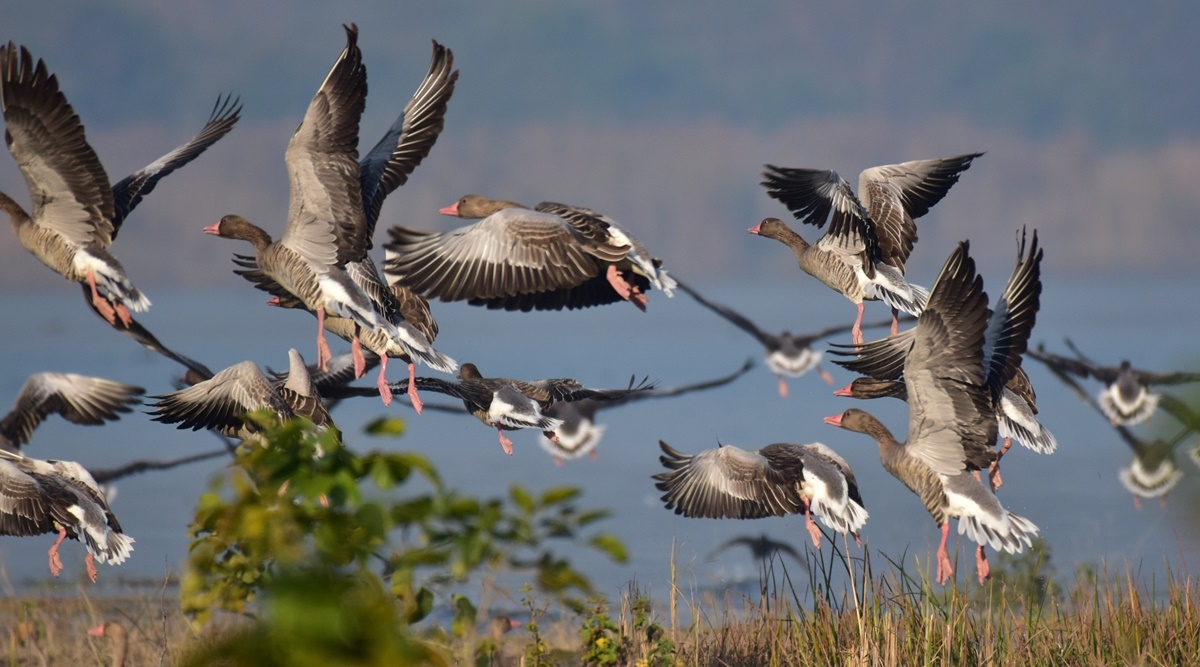December 22, 2021 3:31:09 pm
 Greylags have orange beaks and pink legs with a barred and mottled grey back. They produce a typical honking call, quite akin to that of a vehicle horn.
Greylags have orange beaks and pink legs with a barred and mottled grey back. They produce a typical honking call, quite akin to that of a vehicle horn. Written by Pushkar Bali
Greylag Goose (scientific name – Anser Anser) is said to be the ancestor of the present domestic geese/ducks, later developed through selective breeding. Humans tamed the wild greylag goose for its eggs and meat.
One of the biggest birds in the geese family, the greylags can grow up to 3 feet in length and 3.3 kg in weight.
Greylags have orange beaks and pink legs with a barred and mottled grey back. They produce a typical honking call, quite akin to that of a vehicle horn.
These birds breed in northern parts of Asia and Europe and migrate to south Asia during winters. They can be seen in some parts of southern England throughout the year but during winters the Indian subcontinent becomes one of their favourite destinations.
They are regular visitors of Sukhna Lake, Siswan and other wetland areas around tricity.
Earlier, they were witnessed in northern India only but their presence has also been noted in wetlands of Telangana in recent years.
They are found mostly in wetlands and generally feed on aquatic weeds, grass, near lakes, rivers, and streams. They like the dense ground cover of reeds. They also visit agricultural land where they feed on crops, moving at night to shoals and sand banks on the coast.
Greylag geese are monogamous and usually pair for life. They build their nests on the ground in tall grass, reeds or on small floating islands of vegetation out on the water. The nest is lined with feathers, and the goose lays an average of six eggs, each measuring about 6×9 cm. The incubation period is about 28 days, and while the goose is sitting on the eggs, the gander keeps guard.
Both parents are involved in caring for the chicks. After two months, the chicks are full-fledged, which coincides with the adults regaining their ability to fly after moulting their main wing and tail feathers.
It is sad that this species along with other geese are illegally hunted down.
We need more awareness drives to save such diversity so that we can welcome them every winter with our cameras and binoculars.
- The Indian Express website has been rated GREEN for its credibility and trustworthiness by Newsguard, a global service that rates news sources for their journalistic standards.

